
Rice terraces in Vietnam, the most beautiful mountain scenery
- on Jan 15, 2020 By: Ngoc Nguyen
Intimately linked to the history and way of life of the ethnic minorities living in the mountainous areas of the North, the spectacular terraced rice fields in Vietnam owe their reputation to the men and women of the Hmong, Dao, La Chi and Nung ethnicities. Where to go to admire the most beautiful rice terraces of which some are recognized by UNESCO as a natural heritage of the world? To answer this question, let yourself be guided by trekking lovers towards the Tonkinese mountains and valleys from Sapa in Lao Cai, Mu Cang Chai in Yen Bai and Hoang Su Phi in Ha Giang.
If these joyful sculpted mountainsides enchant visitors with breathtaking beauty, their existence is not just a means of survival. They represent both long-term work and wonderful heritage which ethnic groups have preserved for generations. From multiple tasks of a titanic work to be always carried out in difficult conditions to mystical rituals of worship, it is all played out on the waterfalls of rice fields that revolves the daily and spiritual life of the ethnic minorities living in high altitude.
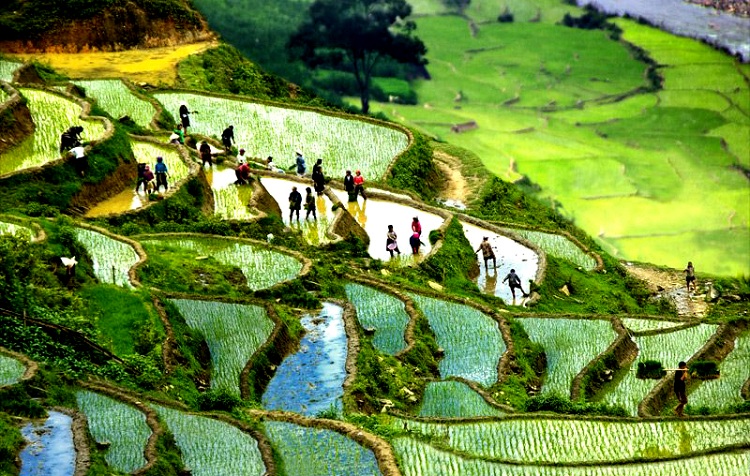
When the young shoot has 4, 5 leaves, they are collected to transplant
How do ethnic groups sculpt rice terraces?
From the clearing, irrigation, transplanting... until harvesting, step by step, this high mountain farming method dates back hundreds of years. Note that, at first, it was under the feet of the mountains where the water currents were more accessible for the tribes cultivating rice. When you had more mouths to feed, they started choosing the hillside and the mountain top to work. In order to decide where to plant the fields, the farmer's first task was to screen for a stream of water used to irrigate the first rice fields on the terrace or the first stands. For this stage, the accessibility and stability of the water mattered first. It was then necessary to ensure the water supply for the levels of fields which followed one another from top to bottom.
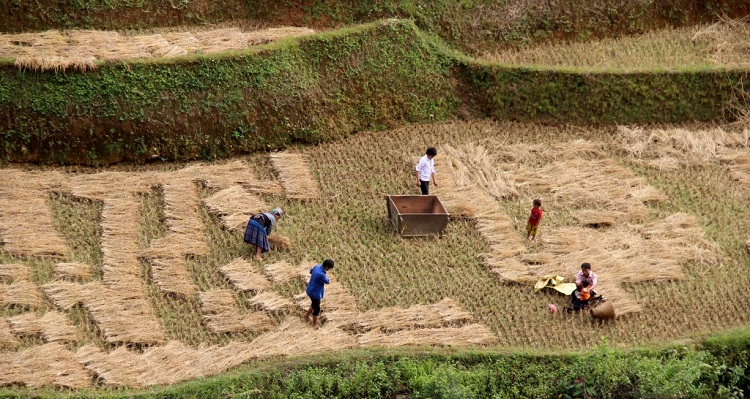
A crucial job to be taken care of by any ploughman is to arrange the bunds separating the plots where the water is kept for rice growth. From afar, the bunds can be seen as the threads that weave the fields. With a height ranging from 30cm up to a meter, they are normally thicker than those shaped in the plain due to the risk of landslides in the rainy seasons. The larger the slope, the greater the distance between two steps and the bunds, therefore, require special attention for a lasting function. In Sapa, as in other regions of the country, we find the rice terraces which are between 0.5 metres and 10 metres wide and a hundred meters long, surrounding almost all of a mountain or hill.
Mountain irrigation is a work combining nature and man and the latter continues to highlight the know-how forged and inherited from ancestors. The next step is to plough which is loaded by man, requiring physical condition, patience and skill, says Giang A Dinh, a Hmong living in Che Cu Nha commune, Mu Cang Chai.
At harvest time, if the Kinh take the packets of ripe rice home to work the threshing machine, the Hmong let them dry in the sun between one and three days before threshing. The job is entirely manual. Quite rudimentary, the unique instrument of these producers is a wooden crate with which family members share the tasks. The straw is collected in bundles to serve as buffalo food in winter.
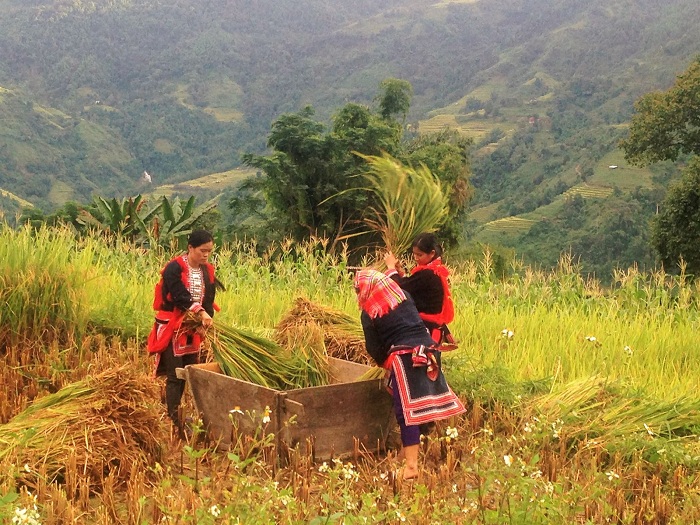
The Hmong and Dao in Sapa and Mu Cang Chai are committed to preserving the traditional types of rice, the main ones being regular rice and sticky rice. The seed, meanwhile, is also part of the inheritance which is transmitted to the descendants or between brothers or sisters of a family. The adoption of rice varieties differs between municipalities and households. And this is based on the adaptability of rice to particular land, the need for food and also the belief customs of the people.
When is the best time to admire the rice terraces in Vietnam?
To immerse yourself in the picturesque landscapes of Sapa, Mu Cang Chai and Hoang Su Phi, choose one of the following periods, each one will delight you with its unique beauty.
+ Rainy season
The first rains arriving around April call for the man to descend into the field to prepare a new crop cycle, starting with irrigation. It is a question of feeding the plots on the terrace by using the water currents from the top and ensuring good management. In a bucolic setting, the atmosphere is enlivened in the early morning by men and women who, with hoe, plough and buffalo, spend hours with their feet in the mud.
+ Harvest season
The fall weather, between September and October, marks a highlight for families in the mountains. Golden rice spreads out on the undulating terraced rice fields to delight locals and photography lovers alike.
Where to go to see the most beautiful rice fields on the terrace?
Several times honoured by the international media, the mountainside wonders of Sapa and Mu Cang Chai have been included in the list of top 12 most beautiful rice terraces in the world published in 2017 by the British newspaper The Telegraph.
In the direction of Sapa, Lao Cai, put your eyes in front of the Ta Van rice terraces in the Lao Chai district, known as the grandest in the region with an area of almost 1000 ha and those of Vu Lung Sung, commune Trung Chai with 121 steps.
In Mu Cang Chai, Yen Bai province, the most beautiful rice terraces are revealed in the municipalities of La Pan Tan, Che Cu Nha and De Xu Phinh.
In the same route, explore the ethnic villages of Ha Giang to marvel at the sparkling rice terraces of Hoang Su Phi in the towns of Ban Phung, Ban Luoc, San Sa Ho, Ho Thau, Nam Ty and Thong Nguyen.
You would also like to read:
>> Ha Giang Vietnam: Top 10 things to see and do
 Español
Español Français
Français








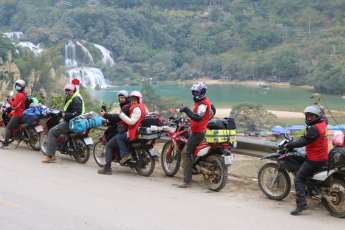

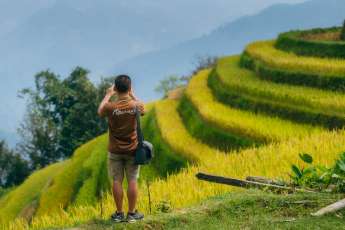
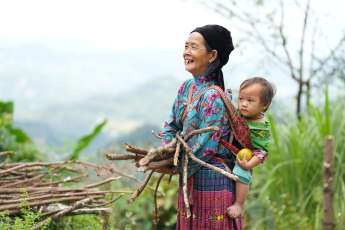
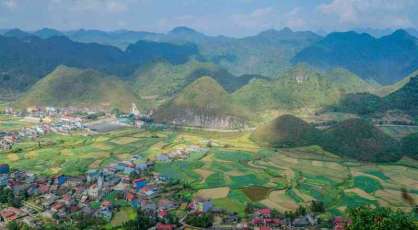
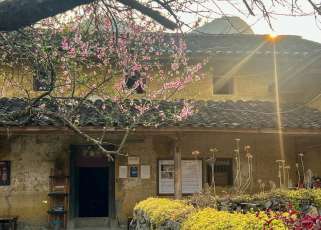







Morgane Ter Cock
on Dec 18, 2025HerbertPhomaMS
on Oct 19, 2025Lilyan Cuttler
on Oct 15, 2025Avenue17XC
on Sep 14, 2025Avenue18JL
on Jul 21, 2025